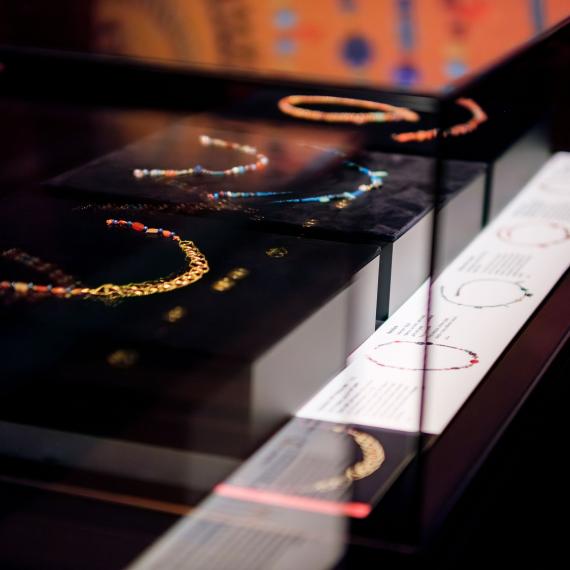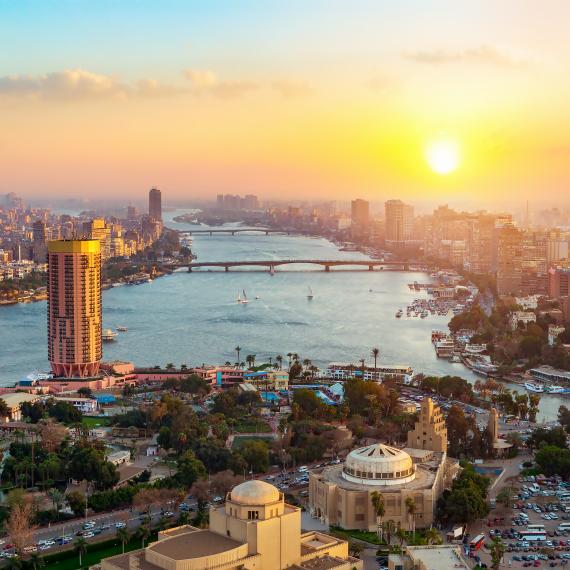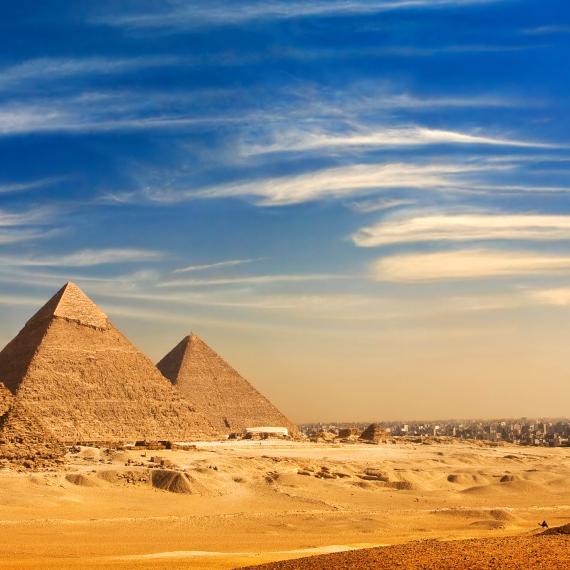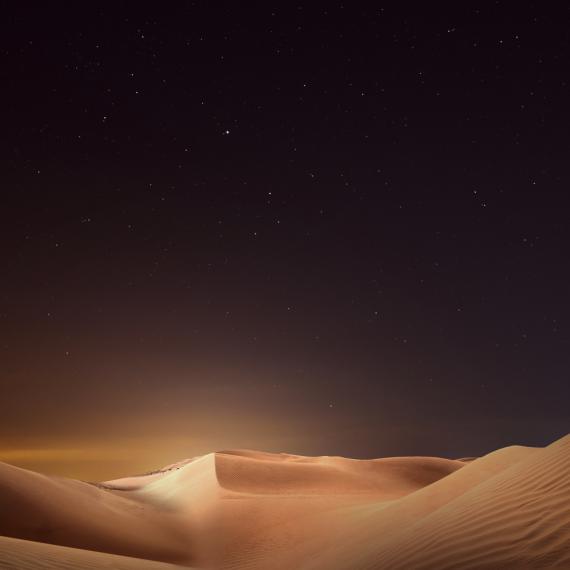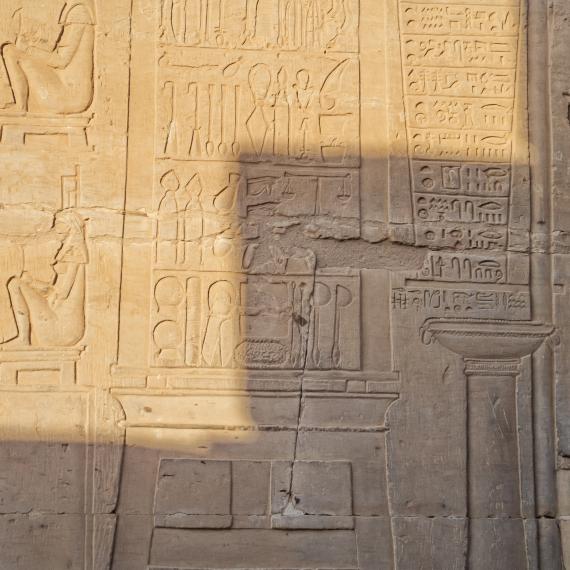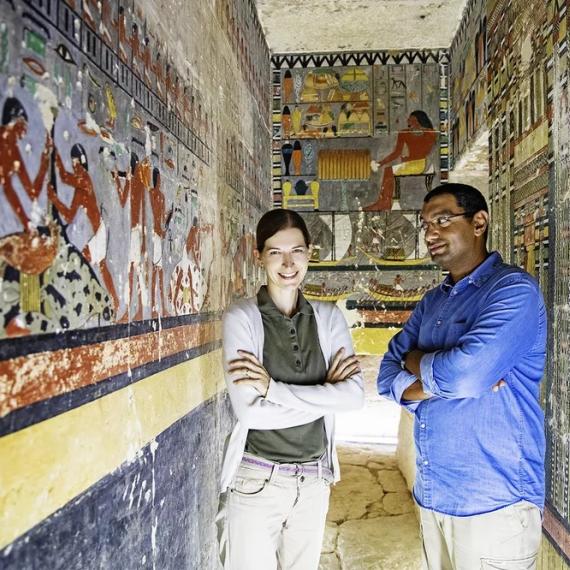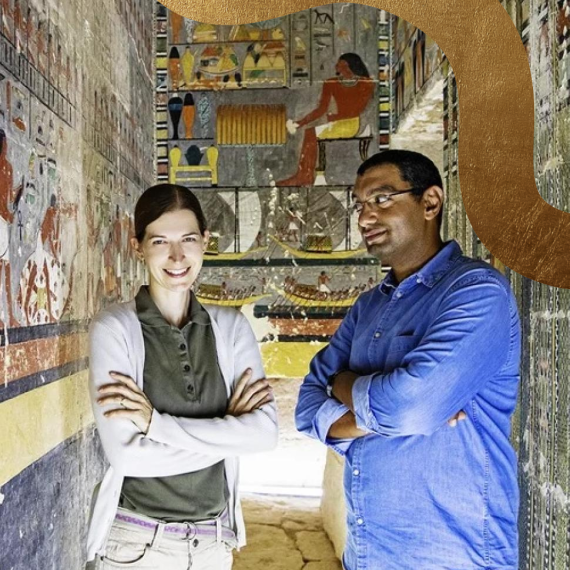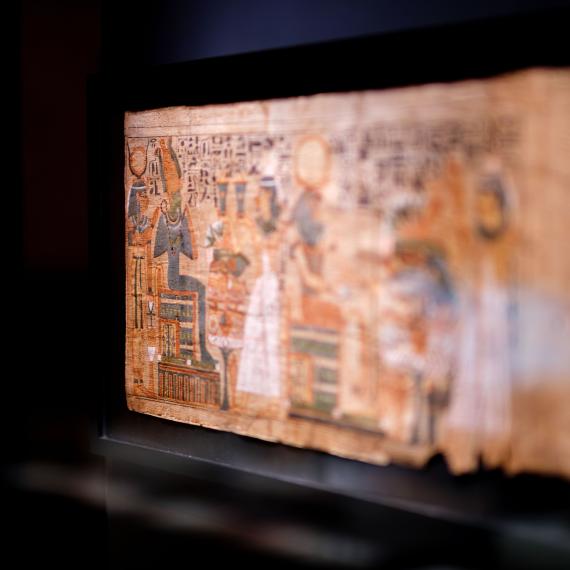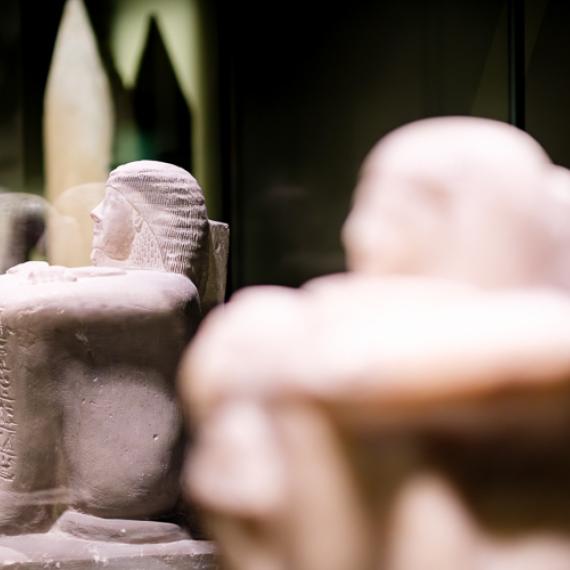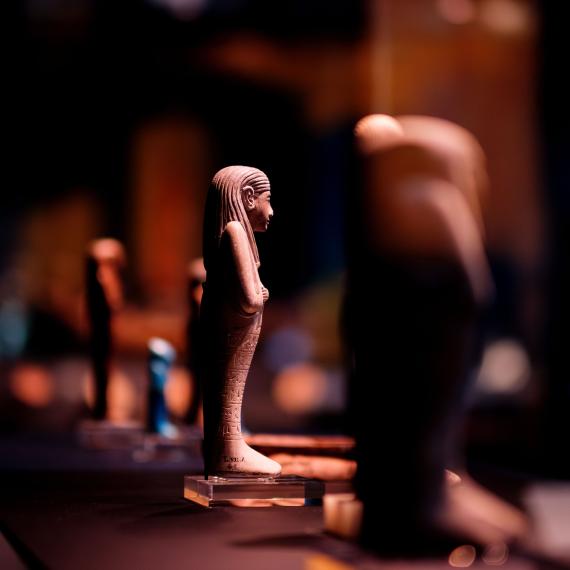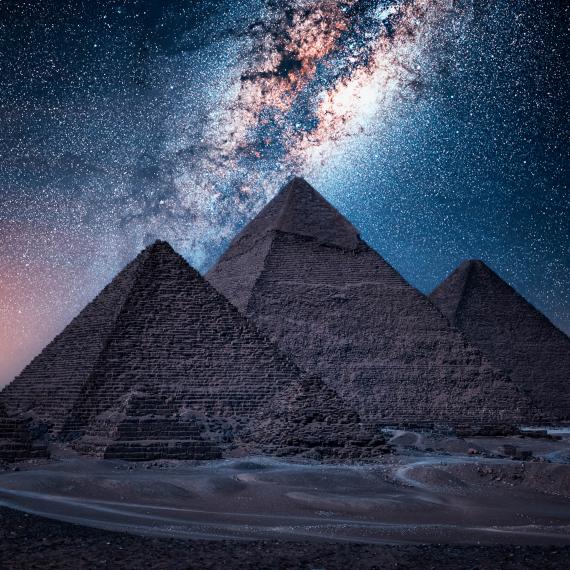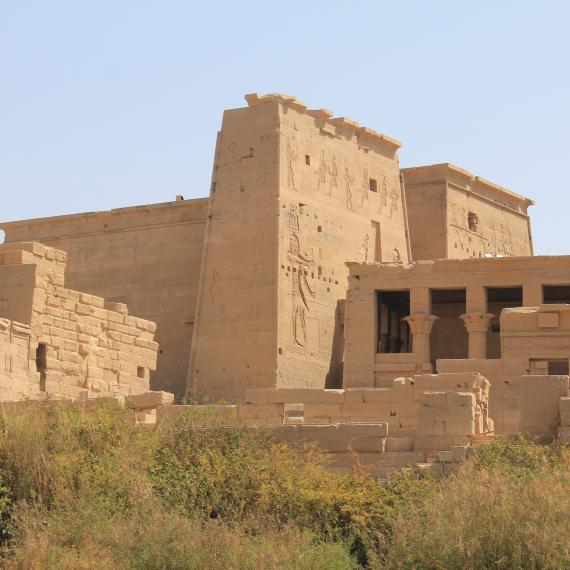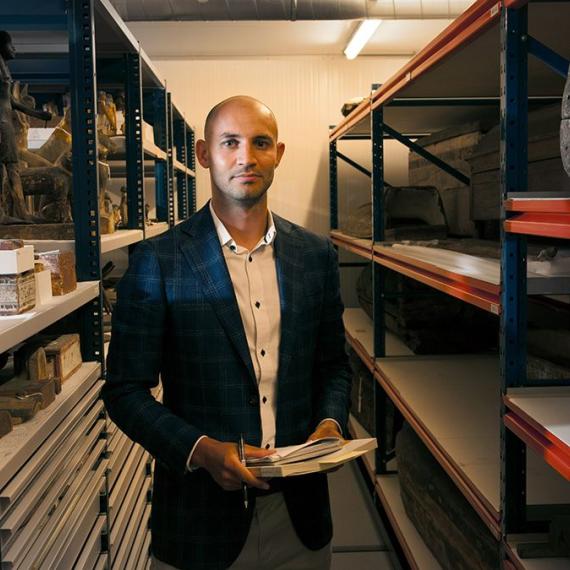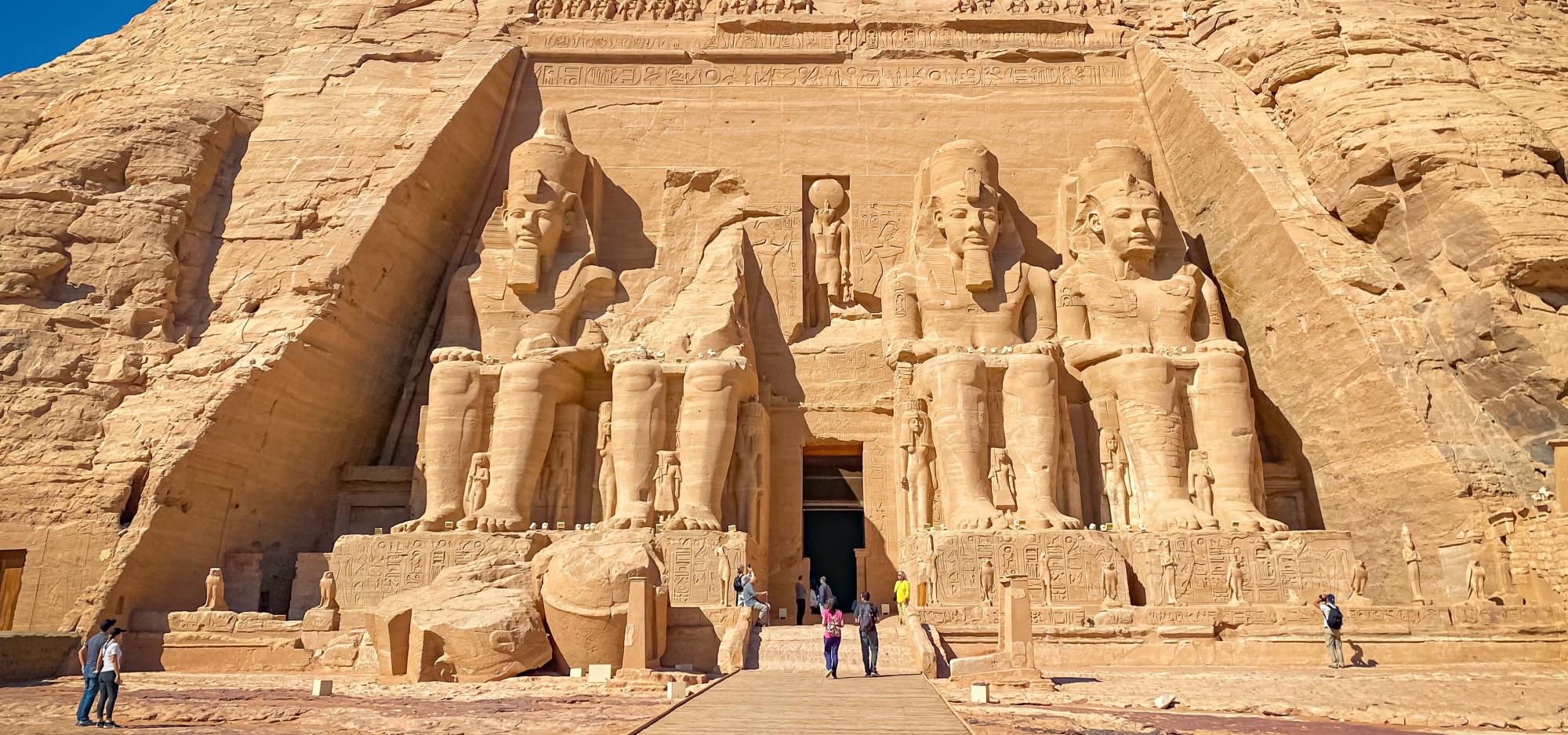
Temples of Nubia with Dean Kubank
We are pleased to announce the return of Dean Kubank, who will be revisiting the Temples of Nubia and the enchanting Temple of Isis at Philae. These remarkable structures were rescued from the threat of flooding caused by the construction of the Aswan Dam. With the collaboration of UNESCO and various member nations, a collection of exquisite temples was carefully disassembled and relocated to elevated areas. These secluded temples are now accessible for viewing exclusively through the Lake Nasser cruise, a captivating journey that takes you from Aswan to Abu Simbel. This unique experience offers the opportunity to witness these remote wonders that were preserved due to the collaborative efforts of many.
-
Episode transcript
Event MC: Tonight, we have a wonderful guest, Speaker Dean Kubank. Please make them feel welcome.
Dean Kubank: Thank you very much. Yeah. My name's Dean Kubank. I'm a member of the Ancient Egypt Society. And as you can see, we've been around for a few years doing all things Egypt. I'd like to thank Boola Bardip for inviting us along to be part of the Afterlife Bar talks this evening.
I recently gave a talk on some of the major temples and tombs of Egypt, but tonight I thought I'd talk about some of the temples from Aswan to Abu Simbel, many of which are rarely seen by visitors to Egypt.
The temples I'll discuss this evening have all been relocated from their original sites due to raised water levels as a result of the damming of the Nile River. In 1898 construction of the first dam across the Nile began, and it's known as the Aswan Low Dam, and that was officially opened in 1902. A second dam seven kilometers upstream, the Aswan High Dam was completed in 1970 and has formed what we know today as Lake Nasser. Since the beginning of the 1950s and the possibility of a new dam, archeologists had been studying which sites would be affected by the construction. In 1960 under the auspices of UNESCO, Abu Simbel and another twenty-two complexes were relocated to the shores of Lake Nasser.
A number of monuments were actually relocated to countries that assisted in the campaign. For example, the Debod temple went to Madrid. The temple of Taffeh went to Leiden and the Temple of Dendur to New York. However, a number of monuments didn't get saved.
The first temple we’ll look at is the beautiful Philae temple which sits on an island in the reservoir between the High and the Low dams. Upon completion of the Aswan Low Dam, Philae quite regularly was sitting in water. And, over time, the structures began to deteriorate. Due to its significance in Egyptian history, a decision was made to move it from its existing location to another island above the proposed water levels. A visit to Philae today is made by a motorboat across the upper reaches of the dam.
It's a temple devoted to Isis, a mother God and her son, Horus, as a child named Harpocrates. The Isis worship grew up here in the Ptolemaic times when the Ptolemies built splendid temples, bringing Philae into great prominence. So, you may recall that the Ptolemy line of pharaohs came about when Alexander the Great's Army General Ptolemy became the first line in Egypt.
As we approach the first temple pylon, on the right-hand side is the East Colonnade, where there's a number of doorways leading to various rooms, one of which is a small chapel. On the left is the West Colonnade, which stretches some 100 meters. Most of the columns have carvings showing the Roman emperors, Tiberius and Augustus offering to the gods.
Here's one of the typical offering scenes that you'll see on some of the temple walls. On the second pylon, which we're looking at here, we see a depiction of Ptolemy the 12th, making an offering to Horus, the child, and Isis. Many of the internal reliefs show the Ptolemaic rulers presenting offerings to the gods.
Approaching the second pylon is the birth house, or mammisi. This structure was an essential feature for temples of this period, with the concept of divine birth being an important justification for the divinity of the King.
Upon entering the temple proper, we see the giant pylons of the hypostyle hall, which are, which would all have been finely decorated. The Romans, in the latter period of rule in Egypt, saw political advantages in associating with the temple and respecting the local culture. One of the interesting external structures is what is known as Trajan's kiosk. It was built around 100 A.D. and during ancient times it was the formal entrance to the temple complex.
Philae was one of the last regions to abandon the old Pagan religion. Converting to Christianity about 550 A.D. Near the rear of the island, there's another entrance, the Roman town gate, believed to be built by Diocletian. And from the waterline, a stairway leads up to the gates entrance,
We’ll now take a cruise vessel to visit the surviving temples in the region known as Nubia in ancient Egypt. And the first of these is the Temple of Kalabsha. You can actually stand on the High Dam wall and see the temple from there. It's also known as the Temple of Mandulis, who was the Sun God of Nubian origins, modeled on the Egyptian god Horus. He was important mostly in Roman times when he was promoted as a high god. His fame lasted as long as the Romans managed to keep Nubia under control from about the first to the third century BCE, Mandulis is usually depicted wearing an elaborate headdress of ram horns, cobras and plumes surmounted by the sun's discs. His main cold center was the Kalabsha temple built around 30 BCE during Octavius Augustus’ reign, but the temple was never completed. When Christianity arrived in Egypt, the temple was used as a church. Kalabsha was saved from the rising waters of Lake Nasser in 1970, with assistance from Germany, which was presented with the gate of Kalabsha, which is now in the museum in Berlin. After Abu Simbel, it was the second largest structure saved from destruction, and the process took two years.
Landing at the foot, you climb a stone causeway to the entrance pylon. Beyond the first pylon, you enter an open court. Then you move through a hypostyled hall, the roof of which no longer exists. But this slide gives you an idea of the size of the columns within. After the hypostyle hall come three chambers, the last being the sanctuary. All three are decorated with reliefs depicting Octavius Augustus making offerings to just about every god in the Egyptian and Nubian pantheon. And believe me, there was lots of gods in ancient Egypt and Nubia - too many to talk about them here. But here's Mandulis with Isis.
The Kalabsha site has a number of other temples nearby which have been rescued. The first of these is the Kiosk of Quertassi. And there's a map of the Temple of Kalabsha and a couple of the other chapels which we’ll look at. All the books describe the Kiosk of Quertassi as a charming Ptolemaic edifice, which consists of a single chamber flanked by four columns with elaborate capitals and two Hathor-headed capitals flanking the entrance. It originally stood by ancient sandstone quarries, as Hathor was the patron goddess of quarrymen and miners. As Hathor was often associated with Isis, as at Philae, it’s thought that this little kiosk, which is eight meters square, along with the temples of Debod and Dendur, were way stations on the processional route taken by priests bearing Isis's image around Lower Nubia, which was which was held to be her estate.
From Quertassi, we can visit the temple of Gerf Hussein. The temple was originally a partly freestanding and partly rock cut temple of Pharaoh Ramses II, which was built by the viceroy of Nubia, Setau, at a site some 90 kilometers south of Aswan. It was dedicated to Ptah and Hathor and associated with Ramses as the great god and was known as the house of Ptah. The rear portion of the building, which was 43 meters in depth, was carved out of rock. And then a pillared hall, featuring two rows of three statue pillars and four statue recesses, each with divine triads along the sides. Unfortunately, the interior of the temple was in very poor condition, so only the freestanding courtyard was saved from the dam, with the rest of the temple now submerged between Lake Nasser. Beneath Lake Nasser, should I say. One colossal statue of Ramses II the second were saved, however. This is now in the Nubian Museum at Aswan.
Next to this chapel is the chapel of Dedwin. Now Dedwin is the oldest known Nubian god mentioned in pyramid texts dating back to the 24th century BCE. He’s usually represented in human form without clear characteristics, although he has been depicted as a lion. Nothing is known of his early Nubian mythology but in the earliest Egyptian writings about him, he's identified as the supplier of incense for the gods. The Egyptians believed that he was the protector of deceased Nubians, as well as the Nubian god for incense and therefore was associated with funerary rites. However, according to some sources, he could have been burning incense at royal births as well.
We can now take a short walk to the temple of Beit al-Wali. It's a rock-cutout ancient temple in Nubia, which was built by Pharaoh Ramses II, and dedicated to the deities of Amon-Re, Re-Horakhti, Khnum and Anuket. Anuket was a goddess of the Nile River. The moving of Beit al-Wali was coordinated with a team of Polish archeologists. It consists of a forecourt, an anteroom with two columns and a sanctuary, which was cut into the surrounding rock. It was fronted by a pylon the remains of which you can see. That’s this one. In the forecourt were the remains of saints showing Ramses II charging into battle with Nubians, as well as depictions of his two sons, Amunherkhepeshef and Khaemweset.
But what you see here are actually the reliefs in the British Museum as there's very little to see on the walls in the forecourt these days. It was early in the 19th century when artist Joseph Bonomi took plaster casts of the scenes and removed the colors in doing so. But fortunately, he took detailed notes of the colors and was thus able to color his casts correctly. Thank goodness for that. Inside, however, is a different story, and there are a number of lovely reliefs still with original color. Here we have Ramses, the second making offerings to Horus and here to the god Amun. The rock cut chamber is supported by two fluted columns and on either side of the door to the sanctuary are two niches containing three rock cut images. The one on the south side has Ramses seated between Isis and Horus.
So off we journey again down the lake to the next stop, which is Wadi as-Sabua. Many writers consider this little temple of Wadi as-Sabua as one of the most attractive of the Nubian temples. It was built by viceroy Setau under instruction from Ramses II around 1236 B.C. and it was dedicated to Amon-Re, Re-Horakhti and Ramses himself in deified form.
This temple is built out of stones except the sanctuary and the inner vestibules which are fully carved into the bedrock. Once you have passed through an avenue of sphinxes leading up to the temple, there is the entrance, three pylons, three courtyards, a hypostyle hall and an inner sanctuary. On its current site today, however, the first and second pylons are no longer in place, but the avenue of sphinxes is recreated with the remains of the statues recovered. The sphinxes in the first court are portraits of the king's head, whilst the four in the second court represent various forms of the god Horus with a small figure of Ramses standing between the paws of each. The third pylon now represents the entrance and has a central doorway. The pylon is decorated in conventional, conventional fashion, with the king smiting his enemies and you might be able to finally pick that up on the right-hand side of the pylon.
Inside there's an open colonnade with five Assyrians-style statues on either side, most of which are now headless. Next is the hypostyle hall with 12 square pillars which had once been adorned with Osiris statues before they were chiseled off by the Christians who were later to use the hall and inner sanctuary as a church. The inner sanctuary is actually carved into the rock and is the most interior point of the temple and once contained statues of Amon-Re, Re-Horakhti and the godly Ramses himself, the triad to whom the temple was dedicated. The walls are decorated with dedicatory scenes throughout and were once covered with plaster by the Christians who have unwittingly helped to preserve them. This next scene shows the sacred bark used in procession carrying a statue of the god. Now leaving Wadi Al-Sabah, you can see how the temple has been recreated into the bedrock.
Our next stop is up a dusty, dusty trail to the hilltop temple of Dakka, and surprisingly, we find a taxi rank conveniently placed so we can actually catch a taxi. However, on this occasion we decided to take the walk and get some exercise. The Temple of Dakka is dedicated to Thoth of Pnubs. The god's title is in reference to the to the sycamore tree fig, to the sycamore fig tree under which he waited for his wife Tefnut to return to Egypt. In a quarrel with Atum, he rampages through Nubia and Thoth is sent to bring her back. In the chapel of the temple, Toth is shown in his baboon form, worshiping his wife Tefnut, in the form of a lioness. However, the alternative version of this myth has a Thoth chasing Sekhmet in her lioness form through Nubia, making her drunk on red wheat beer and promising her that she'll be worshiped forever. With the temple of Dakka being one of the processional temples on the way back to Egypt, the temple has been rebuilt from its original, original location, 40 kilometers downstream upon a bluff with a commanding view of the surrounds.
It was initially a one small room shrine or chapel that was first begun around 220 BCE by the Nubian King Arakamani. But the temple was added to by the Ptolemies and the Romans during the period of Emperors Augustus and Tiberius, and it was further enlarged with a rear sanctuary, inner and outer enclosure walls and a large pylon. There was no avenue of sphinxes for this temple, but rather a processional approach from entry to the pylon to the Nile.
Now, walking down the hill, we come to the Temple of Maharraqa. This temple was dedicated to Isis and Serapis and built in Roman times, probably in the reign of Emperor Augustus. It was never completed and basically consists of a main court with columns. The Maharraqa area where the temple was originally constructed was important as it represented Egypt's southernmost border of the Roman Empire.
Now, if we look back up the hill on the left, we can see the temple of Dakka with its front pylon, and the temple behind it was the Temple of Maharraqa on the right. Sailing again further south, about 45 kilometers, we come to New Amada. Amada is the oldest of the Nubian temples and was constructed by Thutmose III from the 18th dynasty, around 1500 BCE. In the pillared hall there are 12 square and four photo doric columns. Thutmose III is shown offering to the gods. Note the peculiar way the arms have been drawn on Thutmose. So the gentleman on the left of the god sees one arm, but there's two hands coming out and the one on the far right has just got the one arm rather than the two. Now artists don't always get it right. There are some beautiful reliefs in the temple. Here’s Thutmose being given the gift of life by Horus and Thoth. And here’s Thutmose with Amun. When the temple was relocated. Instead of dismantling the stone blocks and redirecting it piece by piece, it was jacked up and placed on flat cars, then hauled on rail tracks in one piece to its present site.
We now move on to the temple of Derr. It was believed to have been built during the latter part of Ramses II, with some scholars thinking it was built for the sed festival in the 30th of year of his reign. And Ramses ruled for a long period of time, it was about 65 years, and he was believed to be ninety when he died, which is an extremely old age for a person in that era.
Amelia Edwards, who wrote ‘A Thousand Miles Up the Nile’, she writes:
“The temple here, dating from the reign of Ramses II is of rude design and indifferent execution. Partly constructed, partly excavated, it is approached by a forecourt, the roof of which was supported by eight square columns. Of these columns, only the bases remain. There's four massive pillars against which one stood four colossi upheld, the roof of which upheld the roof of the portico and gave admission by three entrances to rock cut chambers beyond. That portico is now roofless. Nothing is left. Nothing is left of the colossi but their feet. All is in ruin and ruin without beauty”.
But she continues:
“Seen from within, however, the place is not without a kind of gloomy grandeur. Two rows of square columns, three at each side divide the large hall into nave and to aisles. Walls, pillars, doorways are covered with bas-reliefs, scenes of worship and of anointing, and of anointing, covering the walls. On the west wall, the king offers incense to the boat of Harmachis, a form of Horus, carried on the shoulders of the priests”.
Our cruise now continues until the impressive Abu Simbel temples come into sight. Our final destination, the Temple of Ramses, is on the left and on the right, the temple of Nefertari, his favorite wife. Construction of Abu Simbel took place during the long reign of Ramses the Great and over a period of 30 years. It was built to impress the Nubians and reinforce the Egyptian religion in the region. The Great Temple is designed to show Ramses II in all his glory and awed we are. Note the earthquake damage of one of the statues. Each of his statues is 20 meters high, with the head alone being 9.5 meters and all being seated on a throne and wearing the double crown of upper and lower Egypt. I can imagine it would have been quite confronting to the Nubians as they approached the temple.
The temple is quite complex and unusual in structure with many side chambers. It is dominated, however, by the hypostyle hall being 18 meters in length and 16 meters wide. It's bisected by two rows of four pillars, each representing Ramses in the mode of the god Osiris. At the very rear of the temple is the sanctuary and its four statues of the gods Ptah, Amun, Ramses and himself and Ra-Horakhty.
The siting of the temple was deliberately placed so that on the two equinoxes, the 21st of February and the 21st of October, the rising sun would penetrate the temple to illuminate the sanctuary. Both of these temples were raised 65 meters higher and 210 meters north-west of their original position. They were dismantled by cutting into carefully numbered blocks and then relayed within specially created domes to restore the temple to its original design. The Temple of the Queen Nefertari complements and is an integral part of the Great Temple dedicated to Ramses.
To end our talk this evening, I leave you with a sight, sound and light show image of Queen Nefertari emblazoned over her temple.
Thank you very much.
More Episodes
John Mirosevich explores the varied history of Thonis-Heracleion, Egypt’s greatest Mediterranean port for 400 years.
Listen to Hon Dr Anne Aly MP who joined us at Afterlife Bar for a presentation on the Discoveries of Ancient Egypt exhibition.
Join committee members of The Ancient Egypt Society of WA Inc for a unique opportunity to dig deeper into Egyptology.
Celestial Timekeeping in Ancient Egypt - Discover how Ancient Egyptians used the heliacal rising and setting of stars to construct their star clocks and civil calendar.
The life of the average Egyptian could sometimes be precarious and short. Broken bones, infections, and arthritis were all common among the general population.
Discover the story of the pharaoh Djedkare, his family and courtiers, and take advantage of the rare opportunity to hear from visiting international Egyptologist Dr. Hana Vymazalová of Charles University, Prague.
Discover the story of the pharaoh Djedkare, his family and courtiers, and take advantage of the rare opportunity to hear from visiting international Egyptologist Dr. Mohamed Megahed of Charles University, Prague.
Discover Egypt’s ancient legends of creation, death and resurrection. Tales of Ra, Osiris, Isis and Horus will unlock the meanings of the art, religion and funerary practices of ancient Egypt.
The Dynasty 6 Vizier named Weni the Elder, who lived about four and a half thousand years ago, had a detailed biography written on the outside of his tomb.
How, when and why was mummification invented? The answers may surprise you.
Ancient Egyptian Astronomy Unraveled - Discover how the Ancient Egyptians used their knowledge of the sky to design and position their temples, statues, and roads.
As part of our evening Afterlife Bar series at WA Museum Boola Bardip, we welcome a series of speakers to dive deeper into Egypt. Join us this week as we hear from Dean Kubank on Temples and Tombs.
Renowned expert in ancient Egyptian history Daniel Soliman delivered a fascinating talk, as we celebrated the launch of the WA Museum Boola Bardip's Discovering Ancient Egypt exhibition.
